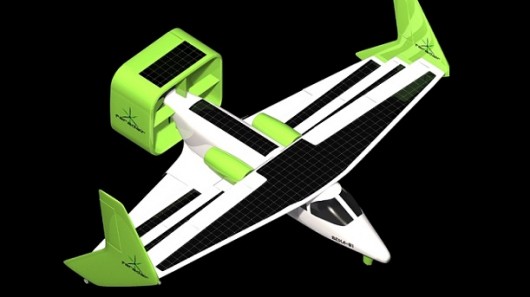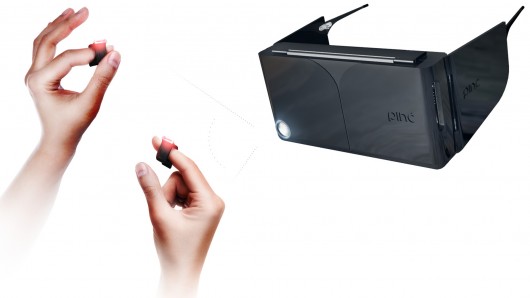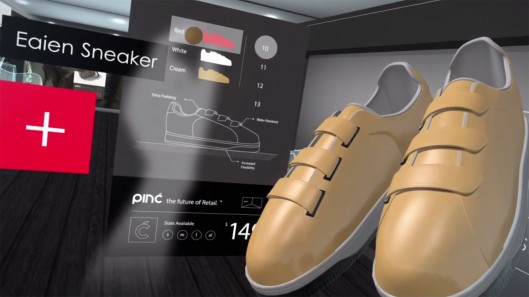By Sheena Faherty | November 26, 2014

Artificial sweeteners. (Credit: PunchingJudy/Flickr)
I find it ironic that Thanksgiving coincides with American Diabetes Month. In honor of that irony, two recently published studies have suggested a possible link between what you eat, how it impacts the behavior of the microbes living in your gut, and type II diabetes.
To further explain, allow me use the most adorable analogy I could dream up: minions.
A rambunctious gang of rotund homunculi, minions are the tireless workhorses behind Gru’s malicious plots in the movie Despicable Me.
Minions are like gut microbes. For starters, despite appearing to be relatively simple-minded, both microbes and minions are capable of astounding things. Building and operating weapons, in the case of minions; regulating immune and digestive function, in the case of microbes.
Working in dark, cramped quarters, like microbes, minions excel at their respective jobs, making Gru’s evil-manufacturing plant run like a well-oiled machine. Upsetting the minions’ balancing act is sure to incite chaos.
It makes sense then that, just as with minions, disturbing the critical equilibrium of the community of microbes living in your gut (i.e. the microbiome) might have chaotic effects on your health. New research may have uncovered a reason why.

Consumption of artificial sweeteners has been shown to alter the community composition of the gut microbial communities in mice, rats and humans. (Figure credit: Erin McKenney, Duke University)
Results from a study by researchers in Israel, published in the journal Nature in October, have suggested that consumption of artificial sweeteners—found in over 6,000 food products—can lead to changes in the gut microbiome, and have put forth an explanation for how this alteration might be associated with diseases such as type II diabetes (Scientific American is part of the Nature Publishing Group).
The authors wanted to test the effects of saccharin-spiked water (i.e. Sweet’N Low) on a variety of health parameters, such as glucose intolerance, which develops when the body can’t cope with large amounts of sugar in the diet, in both humans and mice.
Jotham Suez, a PhD candidate and lead author of the study explains, “We asked people who do not regularly consume artificial sweeteners to add them to their diet for one week, and saw that the majority of these subjects had poorer glycemic responses.”
And like humans, mice that were given saccharin-spiked water also developed marked glucose intolerance compared to mice drinking sugar water, or water alone.
The results were also supported by fecal transplant experiments. (Yes, this is what it sounds like: Mice that initially have germ-free guts are fed feces from mice that were given either saccharin-water or sugar-water. In this way, the microbial communities from the donor mice are established in the germ-free mice. But, I promise, it’s humane. Mice disgustingly eat their own feces anyway through a process called coprophagy. The humans in the study were spared from this experiment.)
Next, the authors wanted to investigate if artificial sweeteners changed the community composition of the microbiome.
Suez says, “We hypothesized that [because artificial sweeteners are] non-digestible, they directly encounter the microbiota, and might exert their effects on the host health through alterations to the microbial community’s composition and function.”

Sweet'N Low is a brand of artificial sweetener made primarily from granulated saccharin. (Credit: Mike Mozart/Flickr)
Their experiment revealed that mice did exhibit different microbiome profiles after consuming artificial sweeteners, just as with the human volunteers who had developed glucose intolerance. And importantly, the humans who did not show glucose intolerance after consuming artificial sweeteners also did not see changes in the community composition of their microbiome.
“[We were surprised] that unlike mice, not all humans consuming artificial sweeteners will be affected in the same manner. We were able to demonstrate that this may be mediated by changes in the composition of the microbiota,” says Suez.
Consequently, this change in microbial community in mice also modified how the microbiota functioned as a group to regulate metabolism. Pathways that impact the transport of sugar in the body were found to have decreased function after saccharin treatment and, notably, there was an increased abundance of short-chain fatty acids (SCFAs), which are implicated in lipid biosynthesis.
An investigation done by an independent group of researchers in Canada found similar results in a study published in October in the journal PLoS ONE.
Although conducted using rats instead of mice, and with a different artificial sweetener (aspartame instead of saccharin) this study also found an increased risk of glucose intolerance. In addition, both studies showed that propionate—a SCFA highly involved in sugar production—is increased in animals consuming artificial sweeteners (although, unfortunately, propionate concentrations in humans weren’t assessed in the Nature study).
You can think of it this way: when mice and rats consume an artificial sweetener, their bodies may be duped into thinking they are following a low-sugar diet, and thus the microbiota shift to produce propionate, ultimately generating more sugar. (It’s important to remember, though, that since propionate concentrations were only examined in mice and rats, the results can’t be directly extrapolated to humans.)
While this isn’t necessarily bad for mice and rats, in humans it might be. Western diets are notorious for containing a gross amount of added sugar, so the food we eat doesn’t lend itself to actually following a low-sugar diet. In humans, if a similar increase in propionate is demonstrated after consuming artificial sweeteners, high blood sugar could be a consequence.
Remember back to the increased risk of glucose intolerance after consuming artificial sweeteners? This comes back into play here.
Not only are the mice and rats now producing more sugar from the alterations of microbial communities, but on top of that, their bodies are less adept at dealing with all the excess sugar that they’re making.
Artificial sweeteners are packing a double-punch.
As compelling as results from these studies might appear, it’s only fair to digest these findings with a grain of Sweet’N Low. Propionate has been linked with loads of health benefits ranging from anti-cancer properties to regulating satiety.
But the take home point is this: findings from two independent studies suggest that messing with the microbiome may have despicable consequences. Artificial sweeteners were originally intended to stave off the increasing obesity and metabolic disease epidemic, but instead they may have directly contributed to it.
In other words, consuming artificial sweeteners appears to throw metabolism out of whack by upsetting the critical balance of the biota in the gut—just as how chaos would surely ensue if you were to throw Gru’s minions out of whack.
However, as Suez says, “Further experiments with a larger number of participants and over a longer duration are required before any recommendations regarding human consumption of artificial sweeteners can be made.”












































